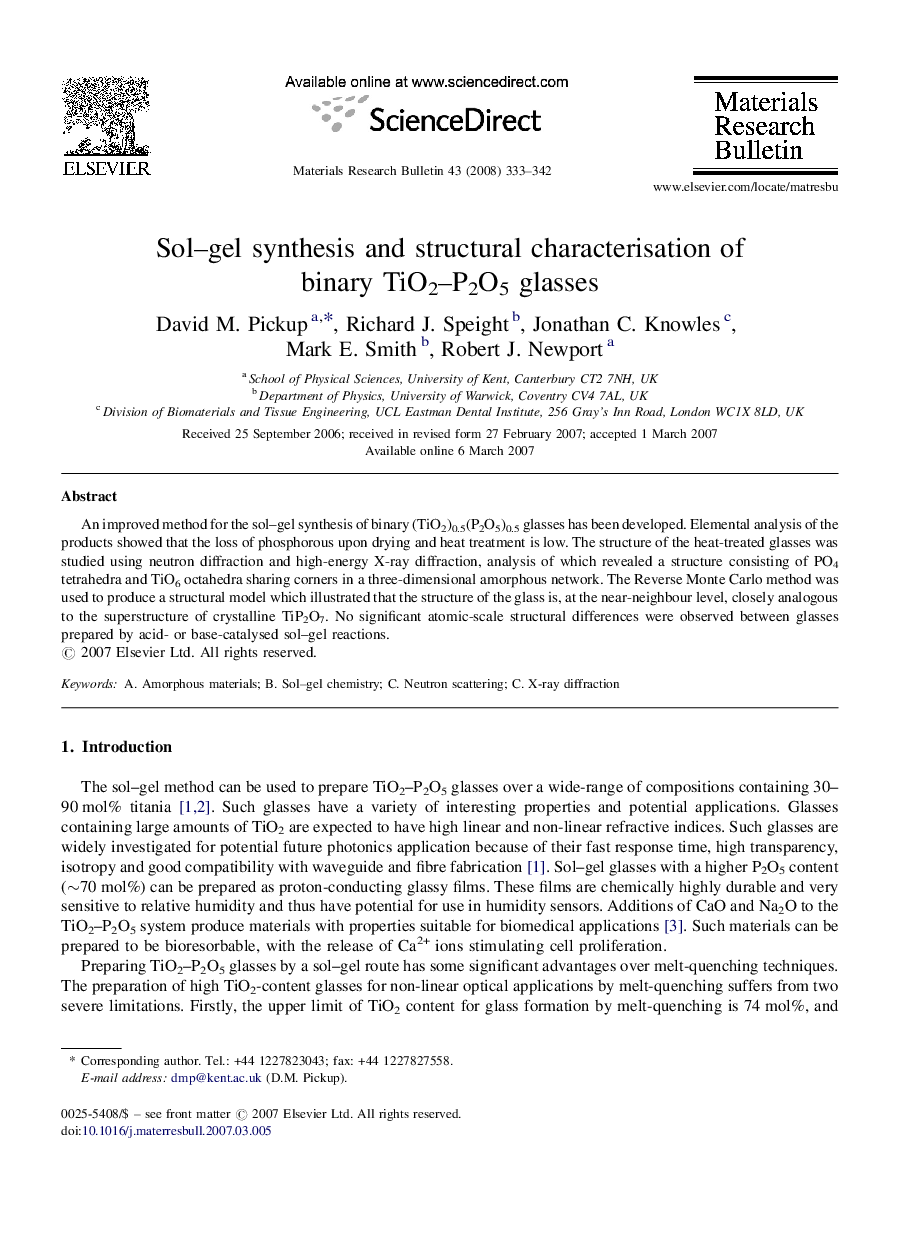| Article ID | Journal | Published Year | Pages | File Type |
|---|---|---|---|---|
| 1491789 | Materials Research Bulletin | 2008 | 10 Pages |
An improved method for the sol–gel synthesis of binary (TiO2)0.5(P2O5)0.5 glasses has been developed. Elemental analysis of the products showed that the loss of phosphorous upon drying and heat treatment is low. The structure of the heat-treated glasses was studied using neutron diffraction and high-energy X-ray diffraction, analysis of which revealed a structure consisting of PO4 tetrahedra and TiO6 octahedra sharing corners in a three-dimensional amorphous network. The Reverse Monte Carlo method was used to produce a structural model which illustrated that the structure of the glass is, at the near-neighbour level, closely analogous to the superstructure of crystalline TiP2O7. No significant atomic-scale structural differences were observed between glasses prepared by acid- or base-catalysed sol–gel reactions.
